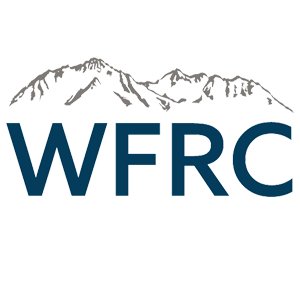It’s Going To Be A Busy Session
November 20, 2023 by Nicole Masson
Policy/Legislative
Wilf Sommerkorn’s, Utah Land Use Politics Blog
November 15, 2023
As noted in yesterday’s post, the Legislative Audit Subcommittee released its report on Utah housing policy yesterday. The overall message that I got out of the report was, “there’s more that can be done, get going!” This reflects the attitude of Gov. Spencer Cox, as noted in previous posts, and that of legislative leadership.
I was all prepared to write a detailed description of what the report says, and what comments were made during the subcommittee meeting yesterday, but Katie McKellar at the Deseret News beat me to it (it is her job, after all!) and wrote a comprehensive story that is in this morning’s DesNews, so I’ll just put up some highlights here, and encourage you to read her story. The story apparently was written before the subcommittee meeting, so I’ll chip in a few comments about what was said there.
Here’s a link to McKellar’s story: Utah audit: A future of only single-family homes ‘recipe for trouble’
Let me start by saying that the report acknowledges what has been done to address housing affordability in recent years by both cities and counties, and by the state legislature. But the overall message is, “there’s still a problem and more needs to be done.”
Legislative auditors concluded Utah needs to build almost 28,000 units of housing a year to keep up with the state’s forecasted growth while signaling a continued prevalence on single-family homes rather than higher density housing would be a “recipe for trouble as Utah continues to grow.”
Auditors also concluded Utah lawmakers should consider ways to “increase zoning density on a wide scale” and implement more “incentives and penalties for noncompliance” with the state’s housing goals to “ensure local government compliance.”
The Utah League of Cities and Towns has been touting the fact that over the last couple of years, cities have issued a record number of building permits for new housing, but the report notes:
Even though Utah cities issued a record number of building permits from 2020 to 2022, “cities that prefer single-family homes or low-density zoning can use their authority to stifle multifamily or high-density residential projects,” auditors wrote in the report.
The report did not emphasize the fact that in the last few years, the majority of permits have been for apartments and multi-family housing, though it is there in the data.
The report notes that land is scarce along the Wasatch Front, and that in order to meet expected future demand, densities would likely need to increase. The report implicitly criticizes cities and counties for keeping densities low, but it does recognize what has been done, and that part of the problem appears to be NIMBYs who come to local meetings.
“Pressure from citizens, along with other factors, has led local legislative bodies to favor single-family homes on relatively large lots,” they wrote. “Most of the land in Utah’s largest cities is currently designated for single-family detached homes, which means certain areas could begin to run out of space for housing before 2050.”
While the report generally was okay with what local governments have been doing on this issue, it did note some issues:
In response to some concern about whether cities are complying with state regulations thus far, auditors wrote those concerns are “largely unfounded,” but added questions about whether certain cities have imposed “unreasonable development standards” or have reviewed building permits in a timely manner “warrant examination.”
“Although we were unable to substantiate accusations that cities had placed unfair roadblocks in the path of development, this finding does not necessarily mean that all cities are acting appropriately in terms of requirements and timeliness,” auditors wrote. “Some cities may use some of these tactics to slow down development; however, after reviewing all complaints that were specific enough to allow follow-up, we were unable to find evidence of cities acting in bad faith regarding requirements and timeliness.”
… auditors did conclude that cities differ in their attitudes and approaches when it comes to housing, and “some cities have used their broad land use authority to circumvent new laws.”
Auditors cited a couple of specific examples of where they believe legislative requirements were circumvented: in Springville on residential design standards, and in Lehi on accessory dwelling units.
In an effort to show that some communities are doing more than others, the report includes tables that show those local jurisdictions that have issued the most building permits over a given recent time period, and those that issued the fewest. Included in the list of the fewest are some counties, such as Davis County. This, however, should be considered against other important policies. Davis County, and some other counties, have deliberately zoned property for very little new development with the intent of directing such new growth to existing cities, which are better situated to provide the urban services intense urban development needs.
There’s lots more to the report, but just go read the DesNews story to get a good overall view.
The report makes several specific recommendations about what should be done going forward. They are:
Recommendation 1.1 We recommend that the Legislature consider requiring the creation of a state-level strategic plan for housing in Utah. This plan should define success and include goals that specifically address the current housing shortage and forecasted population growth.
Recommendation 1.2 We recommend that the Legislature consider amending the land use, development, and management acts at both the county and city level to clearly emphasize housing production and affordability as primary goals of land use regulations.
Recommendation 1.3 We recommend that with information gathered from strategic planning, the Legislature consider the range of state-level policy options presented in this chapter to create a program to set and manage state-level housing production targets.
Recommendation 2.1 We recommend that the Legislature consider whether to expand the moderate-income housing plan requirements to include forecasting benchmarks for household growth.
Recommendation 2.2 We recommend that the Legislature consider options to increase zoning density on a wide scale within the state.
Recommendation 2.3 We recommend that the Legislature consider policy options to craft additional penalties and incentives associated with housing planning and targets to better ensure local government compliance.
Recommendation 3.1 We recommend that as part of any statewide housing strategic planning, the Legislature consider metrics to better track both actual and potential housing production.
You can read the full report itself here: A Performance Audit of Utah Housing Policy
The Utah League wrote an excellent response to the audit, and Executive Director Cameron Diehl reiterated much of that during his comments at the subcommittee meeting. In particular, Cam noted that many of the actions taken recently by the legislature have not had time yet to see whether they are effective. We need to give things some time to see if they will produce results. And how do we measure when things are “successful?” The actual number of new homes built depends on a lot of other factors beside those that we’re talking about here.
… the league also cautioned that any “targets” included in the strategic plan should “recognize what government controls and what government does not control. Cities plan for housing, but the private sector builds housing.” It noted one of the largest impediments” of housing are infrastructure, including water, sewer and roads, calling for state investment in those areas.
The League also expressed hesitancy about the recommendation to expand moderate-income housing plan requirements to include household growth forecasts, noting “other states that have set benchmarks do not yet have results of whether those policies have improved housing affordability.”
It also worried about benchmarks that are “outside of government control,” noting that some cities have zoned for unlimited density near transit areas but the market has only produced wood-framed, podium-style apartment buildings due to cost, and those styles are more profitable and easier to finance than building larger steel-framed buildings. It also noted some cities have zoned for increased density, but homebuilders only built to a fraction of the entitled density.
The overall tone in the meeting seemed to me to be one of, “there’s a problem, and we all need to work together to address it.” That is encouraging to me, as the top-down approach that has been pursued in some other states seems to engender reluctance, foot-dragging, and even downright opposition from local governments (I’ve harped on this theme in several previous blog posts).
The audit subcommittee voted to refer the report to a couple of legislative standing committees for their consideration for legislative actions in the upcoming session. My hope is that the move to create a state strategic plan will be a collaborative effort with state and local officials.
No doubt, lots more to come. This report, along with the previously actions of the UEOC and the LUTF, indicates that housing and local land use planning and regulation will be a big topic on Capitol Hill early next year.
Recent News
- » APA Utah Board Elections Are Now Open!
- » APA Utah Winter Social: Movie Night Featuring ELF
- » APA Utah Annual Business Meeting
- » Thank You for Attending the APA Utah Fall Conference!
- » Fall Conference
- » APA Utah is Growing — and We Need Your Help!
- » Call for Nominations: Join the APA Utah Board of Directors


































